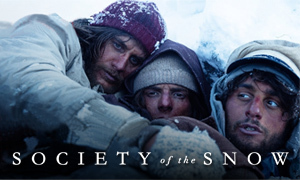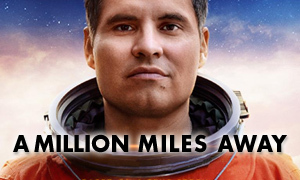Thirteen Lives: History vs. Hollywood
Viggo Mortensen
Born: October 20, 1958
Birthplace:
New York City, New York, USA
Rick Stanton
Born: 1961
Birthplace: Epping Forest, UK
Bio: British Cave Diver | Firefighter
Colin Farrell
Born: May 31, 1976
Birthplace:
Castleknock, Dublin, Ireland
John Volanthen
Born: June 1971
Birthplace: Brighton, Sussex, England, UK
Bio: British Cave Diver | IT Consultant
Joel Edgerton
Born: June 23, 1974
Birthplace:
Blacktown, New South Wales, Australia
Richard "Harry" Harris
Born: abt 1964
Birthplace: Australia
Bio: Australian Cave Diver | Anesthetist
Tom Bateman
Born: March 15, 1989
Birthplace:
Oxford, Oxfordshire, England, UK
Chris Jewell
Born: August 19, 1982
Birthplace: UK
Bio: British Cave Diver
Lewis Fitz-Gerald
Born: November 15, 1958
Birthplace:
Adelaide, Australia
Vern Unsworth
Born: June 23, 1955
Birthplace: Lancashire, United Kingdom
Bio: British Cave Diver
Teeradon Supapunpinyo
Born: April 27, 1997
Birthplace:
Bangkok, Thailand
Coach Ekaphol Chantawong
Bio: Assistant Coach of Wild Boars Soccer Team | Former Buddhist Monk
Josh Helman
Born: February 22, 1986
Birthplace:
Adelaide, Australia
Major Charles Hodges
Birthplace: South Carolina, USA
Bio: U.S. Air Force On-Scene Mission Commander During Rescue
Zahra Newman
Birthplace:
Port Antonio, Jamaica
Capt. Jessica Tait
Born: abt 1988
Birthplace: Seoul, South Korea
Bio: U.S. Air Force Spokesperson During Rescue | Renamed Olivia Taft in the Movie
Sukollawat Kanarot
Born: April 18, 1985
Birthplace:
Khon Kaen, Thailand
Saman Kunan
Born: December 23, 1980
Birthplace: Chaturaphak Phiman District, Thailand
Death: July 6, 2018, Tham Luang Cave, Thailand (lack of oxygen)
Bio: Former Thai Navy SEAL
Sahajak Boonthanakit
Born: March 28, 1980
Birthplace:
Bangkok, Thailand
Governor Narongsak Osottanakorn
Bio: Governor of Chiang Rai Province of Thailand
When did the real story of the Thailand cave rescue take place?
The Thirteen Lives true story unfolded over the course of 17 days during the summer of 2018. On June 23, twelve young boys and their assistant coach, Ekaphol Chantawong, 25, from the Wild Boars soccer team entered Tham Luang Nang Non ('Great Cave of the Sleeping Lady'), a three-mile-long cave system located under the Doi Nang Non mountain range on the border of Thailand and Myanmar. The boys ranged in age from 11 to 17 and it was their first time visiting the cave, which closes in mid-July due to monsoon season flooding.
Why did the boys and their soccer coach enter the Tham Luang cave?
They decided to go sightseeing after soccer practice. The skies had been relatively clear, but the weather would soon change. They explored the cave for some time as heavy rain began to fall outside, which resulted in flash flooding. In conducting our Thirteen Lives fact-check, we learned that when they tried to walk back out, they encountered pools of water and started to question whether they had gone in the wrong direction. Once they realized they were lost and didn't know how to get out, they found an elevated, dry rock shelf where they waited for help. They were roughly 2.5 miles from the cave's entrance and about 1,300 feet past the "Pattaya Beach" chamber, named after an actual beach in Thailand. Heavy rain continued to fall outside. Monsoon season had arrived early.
How did the parents find out that their boys were trapped in the cave?
When their children did not come home from soccer practice, the parents began calling the head coach, Nopparat Kanthawong, who noticed about 20 missed calls when he checked his phone. Kanthawong phoned the assistant coach, Ekaphol Chantawong, but got no answer. He then began calling the boys, eventually reaching Songpol "Pone" Kanthawong, a 13-year-old player who explained that he had been picked up by his mother after practice. He informed his coach that the other boys had gone to the Tham Luang cave with Assistant Coach Chantawong. Nopparat set off for the cave and discovered the boys' bags and bikes abandoned near the entrance, as did some of the parents who had arrived. Realizing that the cave was flooding, they phoned the authorities for help. -The Washington Post
How long did it take for rescue efforts to begin?
In researching how accurate is Thirteen Lives, we discovered that the boys and their coach entered the Thailand cave on June 23rd and Thai Navy Seals began their rescue efforts on the night of June 24th. However, due to heavy currents and mirky pools of rain, dirt, and debris, divers made little progress. As the rain continued to rush into the cave, the divers were forced to halt the initial rescue mission. Pumps were brought in to try and pump the water out of the tunnels, but too much was coming in at the time and it was a losing effort. Luck did not seem to be on their side.
Is caver Vern Unsworth based on a real person?
Yes. While researching the Thirteen Lives real people, we learned that Vern Unsworth, like most of the movie characters, is based on a real person. Unsworth, who is portrayed by Lewis Fitz-Gerald in the Ron Howard film, was a British-born caver who lived nearby in Thailand and had extensive knowledge of the Tham Luang cave system. Unsworth was on the scene the day after the boys got stranded inside and was the person who suggested to the Thai governor that they bring in experienced cave divers from other countries. He gave them a list of the best cave divers in the world, including fellow Brits Rick Stanton and John Volanthen (portrayed by Viggo Mortensen and Colin Farrell in the movie).
Vern Unsworth is perhaps best known for getting into a spat with Elon Musk during the Thai cave rescue efforts, which found Musk calling him "pedo guy" on Twitter after Unsworth suggested Musk's attempted to build a minisub was a "PR stunt" with "absolutely no chance of working." Musk's insult was eluding to the fact that Unsworth's Thai girlfriend, Woranan Ratrawiphukkun, then 40, was 23 years younger than him. In September 2018, Unsworth sued Musk for defamation but lost the suit the following year when a jury found that Musk had not defamed Unsworth. Musk apologized to Unsworth, saying that the insult was made during heated rhetoric and was not a statement of fact.
Did the assistant soccer coach teach the boys how to meditate?
Yes. Analyzing the Thirteen Lives fact vs. fiction confirms that 25-year-old Ekaphol Chantawong, referred to as Coach Ek, was a former monk who taught the 12 boys how to meditate in order to stay calm, conserve energy, and use as little oxygen as possible. Coach Ek is pictured on the left below inside the cave.
Did one of the boys have a birthday while stranded in the Tham Luang cave?
While researching the Thirteen Lives true story, we learned that goalie Peerapat "Night" Sompiangjai turned 17 on June 23rd, the day the boys and their assistant coach entered the cave. He was the oldest of the 12 boys who became trapped in the cave. He was supposed to return home and celebrate his birthday with his family, who had cake and presents waiting.
Did British cave divers Rick Stanton and John Volanthen begin to lose hope?
Yes. By day eight, the Thailand cave rescue workers began to fear the worst and some had lost hope of finding the boys and their coach alive. "There was a very strong feeling that the children couldn't be still alive," says John Volanthen. "It just didn't seem possible. We lost hope." Volanthen says he was encouraged by the determination of the Thai Navy SEALs and later regretted believing that the boys were dead. -The Rescue
Were a group of pump workers discovered stranded inside the cave?
Yes. "We surfaced in what became known as Chamber Three," recalls rescue diver John Volanthen. "We thought we'd found four of the football team. They were pump workers. They had been asleep on the sandbank, missed the evacuation and got flooded into the cave. And nobody knew they were missing." Fearing that chamber could flood completely, John Volanthen and Rick Stanton dove the four men out.
"We just gave them a regulator from one of the cylinders that was attached to us," says Stanton. A Thirteen Lives fact-check confirms that the four pump workers were terrified. Volanthen likened getting them out to an "underwater wrestling match." They would panic and bolt up whenever they thought they were under an airspace, letting the regulator fall out of their mouth. One worker recalled swallowing a lot of water. -The Rescue
How long were the boys trapped in the Thailand cave before divers located them?
After nine days of being trapped in the cave with no contact to the outside world, the soccer team was located on July 2nd by two British rescue divers, Rick Stanton and John Volanthen, portrayed by Viggo Mortensen and Colin Farrell in the movie. The divers, who are members of the British Cave Rescue Council (BCRC), captured the discovery of the boys and their soccer coach on video, and they confirmed that all 13 individuals were alive. Like in the film, the boys were somewhat let down when they realized it might be some time before they could get out of the cave (it ended up taking eight more days).
"Eat, eat, eat, tell them we are hungry," pleaded one of the boys. Stanton and Volanthen promised the boys that Thai Navy SEALs would be coming the following day, including a doctor. However, both men also understood that should conditions worsen, they may be the only ones to have ever seen the boys and their assistant coach alive in the cave. "As we went around the corner and kitted up, total silence between me and John, just a look into each other's faces, thinking, we may be the only ones that ever see them. That was a distinct possibility," says Rick Stanton. -The Rescue
Did any of the boys or their coach speak English?
Like in the Thirteen Lives movie, the true story confirms that only one of the boys, Adul Sam-on, spoke English and was the only one who could communicate with the initial Tham Luang cave rescue party made up of British cave divers Rick Stanton and John Volanthen (played by Viggo Mortensen and Colin Farrell in the film).
Were they in the dark the whole time?
While exploring the Thirteen Lives fact vs. fiction, we discovered that prior to help arriving more than nine days into their ordeal, the 12 boys and their coach spent most of the time in total darkness without any natural awareness of time. They did have cheap flashlights with them that they had gone into the cave with, but those could not provide light for long. The Thai Navy SEALs brought lights with them in addition to food and letters from the boys' parents. When they were finally rescued, they had to wear sunglasses when they were first brought out of the cave. -BBC
How did the boys survive while trapped in the flooding Thai cave system?
Prior to anyone arriving to help them, the 12 boys and their assistant soccer coach drank the water that dripped down the cave walls as opposed to the dirty groundwater. They had been forced to abandon some food supplies when they fled the rising water, but according to the BBC, they had some snacks with them that they had banded together to buy to celebrate the 17th birthday of Peerapat Sompiangjai, a fellow player who was also in the cave. Understandably, they grew extremely hungry over the course of the ten days they were without food, other than the snacks they had on them when they went in. Most of them lost an average of 2 kg (4.4 pounds). While stranded, they used the flashlight they had to search the area around them for a way out but had no success.
They were located on day ten and Thai Navy SEALs arrived the following day with food and water. Three SEALs, including Thai military doctor Lt. Col. Pak Loharachun, stayed with the boys and their coach, helping them survive until they could all be rescued. The Thai Navy SEALs were pivotal both during the three days it took to extract the boys and during the days prior. They refused to leave until the last boy and volunteer was out. As the monsoon rains approached, the SEALs' journey out of the cave was the most precarious of all.
Had the boys attempted to dig their way out of the Thai cave?
Yes. According to Lt. Col. Dr. Pak Loharachun, commander of the 3rd Medical Battalion who made contact and stayed with the boys, they had been digging to try and find a way out. "Every day, the kids dug a hole into a wall with rock fragments to find a way out. They managed to dig five meters deep (16.4 feet) although they had nothing to eat," Pak wrote on his Facebook page. "The qualities of the Moo Paa [Wild Boars] team that impress me are their optimism and great morale in the wake of the ordeal."
What options did rescuers discuss for getting the group out of the flooded Tham Luang cave?
Thailand cave rescue workers scoured the mountain looking for other entrances into the cave, including holes that they could repel down through. Once the boys were found alive by British cave divers Rick Stanton and John Volanthen, rescue workers reasoned that there must be other openings down into the cave that were allowing air to get to the team. They also discussed drilling a new entrance down into the cave or drilling in from the side. However, the boys were located 2,600–3,300 feet below the top of the mountain. Other options included teaching the boys basic underwater diving techniques or even waiting four months until the floodwaters subsided at the end of monsoon season.
The Thirteen Lives true story reveals that Elon Musk made the news when his team of engineers began working around the clock to create what he called "a tiny, kid-size submarine" from the transfer tube of SpaceX's Falcon rocket, which was described as an "inflatable tube with airlocks." Though Richard Stanton himself thought it was a good idea and encouraged Musk to continue, it was reported to be impractical for the cave and was never used.
How many people were involved in the rescue effort?
While analyzing the fact vs. fiction, we discovered that more than 10,000 people participated in the rescue effort. This included over 100 divers, countless other rescue workers, 2,000 soldiers, 900 police officers, and officials from roughly 100 government agencies.
Were oxygen levels dropping inside the cave?
Yes. When the boys were found, the oxygen levels inside the cave were thought to be adequate. However, by July 6th, the levels in the cave had dropped, likely due to all of the Tham Luang cave rescue workers who had been inside. On July 8th, the level where the boys were had fallen to 15%. For humans to function normally, the oxygen level needs to be between 19.5% and 23.5%. Cannisters of air were constantly being rotated into where the boys were and to different spots along the route. Military engineers even attempted to install an air supply to the boys, but the task was abandoned after it was deemed impractical.
Did anyone die during the Thai cave rescue?
Yes. As seen in the film, there were some injuries up on the mountain during the effort to divert the water from entering the Tham Luang cave system. "That was something I didn't know anything about, and with that water diversion program, people got injured," said director Ron Howard during a press conference. "The stakes were just as high for them, as for anyone functioning around the cave. I thought it was very important to convey that, as well."
In answering the question, "How accurate is Thirteen Lives?" we can confirm that the biggest tragedy happened on July 5th after former Thai Navy SEAL Saman Kunan carried out a successful dive to place air tanks along the approximately 3.2km route to the area of the cave where the boys were stranded. Given that there were hundreds of rescue workers in the cave, this meant that more oxygen was being used up. Saman placed the tanks and started to make the return dive. While heading back to "Chamber Three," he lost consciousness due to a lack of oxygen. A fellow diver retrieved his body and tried to revive him but was unsuccessful. His death elevated fears that trying to dive the boys out could be deadly. -The Guardian
"[The Thai Navy SEALs] were operating in an environment they're not used to," said Rick Stanton. "None of them had dived in caves and the kit they had was completely unsuitable. They were unbelievably brave," added John Volanthen.
In addition to Saman Kunan, Thai Navy Seal Beirut Pakbara, who also worked in the cave as a diver, died in late 2019 from a blood infection he contracted during the rescue efforts the previous year.
How much water did they pump out of the cave?
More than a billion liters of water were pumped out of the cave and more was diverted from entering the cave system. As a result, many nearby farms were flooded. However, despite losing crops and livestock, the farmers supported the rescue effort, with the general sentiment being, "Let the water flood our farms." By July 5th, water levels in some areas of the cave had been reduced by about 40% (Business Insider).
Did they sedate the boys before bringing them out?
Yes. British cave diver Rick Stanton phoned Australian cave diver and anesthetist Richard Harris (portrayed by Joel Edgerton in the movie) and presented the idea of sedating the boys to dive them out. Opposed to the idea at first, Harris eventually agreed to give the boys ketamine after he arrived on site and realized it was the best option. Ketamine is a dissociative anesthetic that induces a trance-like state, making the user feel disconnected. In high enough doses, it causes unconsciousness. It is mainly used for the induction and maintenance of anesthesia. Harris had to teach the other rescue divers how to administer the drug via a needle in the legs of the boys. This is because the initial dose would begin to wear off before the boys were out of the cave.
They also gave the boys a Xanax tablet to reduce anxiety and an injection of atropine, which has an anti-salivation side effect to help ensure that the boys don't drown in their own saliva. These drugs would hopefully make certain that the boys, none of whom had diving experience or even knew how to swim, would be relaxed and would not panic in the water. Rescue diver Rick Stanton, portrayed by Viggo Mortensen in the movie, later revealed that the boys were heavily sedated and were in fact unconscious during the journey out of the cave.
"We presented it as that was the only way they were going to get out," says Rick Stanton, "and they had to be sedated to do so. Ethically, we had to tell them a day prior to the first rescue mission that we were gonna sedate them and bring them out, and they had to agree to that. They were not conscious, no. None of them remember the journey at all." -ITV News
In an interview, Richard Harris explained that they also put cable ties around the boys' wrists and told them it was to prevent water from getting into their loose-fitting wetsuits. What the boys weren't told is that once unconscious, the divers put each boy's arms behind his back and used a carabiner to clip the cable ties together. This was done in part to make the boys more streamlined so it would be easy to push them through the water as the divers got them out. It was also done so that their arms wouldn't float about and potentially get caught up in stalactites and other restrictions. Their feet were tied together as well. -ABC TV & iview
Did all 13 people trapped in the Thailand cave survive?
Yes. There was concern that the boys might be too weak to complete the journey out of the cave. However, they had been given food, water, and medicine to help restore their energy in the days leading up to the start of the extractions. According to The Guardian, three of the boys had been dealing with intestinal issues and stomach pain. Their physical states became less critical once it was decided that they would be brought out unconscious. When the rescue plan was ready to be executed, each boy to be brought out was sedated and they exited the cave with a highly experienced rescue diver, as did their soccer coach. After making it out, two of the boys were checked for a possible lung infection, but overall, they were "healthy and smiling" (ABC News).
How long did it take to get each boy out of the cave?
During our investigation into the Thirteen Lives true story, we discovered that it took nearly three hours to get each boy out of the cave, which is part of the reason it took three days to get all of the boys and their coach out. Another reason was that they only had four positive pressure masks. Such masks allowed leaks to go outwards instead of inwards. -The Rescue
How long were the boys and their soccer coach trapped in the flooding caves?
The 12 young boys and their assistant soccer coach were trapped in the flooding cave system for approximately 17 days. Rescue attempts were eventually carried out during a period of milder rainfall when the efforts to pump some of the water out of the cave were most successful. The final four boys and their coach were saved on Tuesday, July 10th, with the others completing the journey out during the two days prior. The next monsoon downpours had been forecast to begin the following day, July 11th.
Were Thai actors cast in the Thirteen Lives movie?
An analysis of the film's historical accuracy reveals that the Thai soccer players and their parents in the film weren't professional actors, but they were from the north and could accurately capture the northern dialect. "They weren’t professional actors, but they could ad-lib in the dialect," noted director Ron Howard. "It's not just an accent, it's also phrasing. It was just vitally important that we tackle those things." Howard said that honing in on such details reminded him of his collaboration with the astronauts on Apollo 13. "It's all driven by my curiosity, to be honest. I don't go into this knowing much about it, whether it's space, Formula-1, math, or diving and cave rescues."
Where was Thirteen Lives filmed?
Most of the filming was done in makeshift caves on a set in Queensland, Australia. Some scenes were also shot in Thailand.







